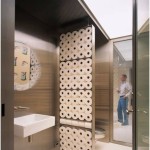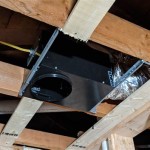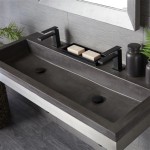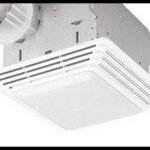Here's an article addressing the prevalence of mold in bathrooms:
Is Mold in the Bathroom Common? Understanding the Causes and Prevention
The presence of mold in bathrooms is a frequently encountered issue for homeowners and renters alike. Bathrooms, by their very nature, provide the ideal conditions for mold growth: consistent moisture, poor ventilation, and readily available organic materials. Understanding why bathrooms are so susceptible to mold is the initial step in preventing and managing this pervasive problem.
Mold, a type of fungus, thrives in damp, humid environments. It reproduces by releasing tiny spores that float in the air. These spores are virtually everywhere, both indoors and outdoors. When these spores land on a surface with sufficient moisture and a food source, they begin to grow and colonize. Bathrooms offer these essential elements in abundance, making them prime breeding grounds for mold.
The Perfect Storm: Moisture, Humidity and Organic Materials
The primary reason bathrooms are prone to mold growth is the high level of moisture. Showers, baths, and even handwashing contribute significantly to the humidity within the space. Hot water creates steam, saturating the air with moisture that then condenses on cooler surfaces such as walls, ceilings, and tiles. Leaky faucets, showerheads, or pipes can introduce even more moisture, creating a constant source of water for mold to feed on.
Furthermore, the porous nature of many bathroom surfaces provides a haven for mold. Grout between tiles, caulk around tubs and sinks, and even painted walls can absorb moisture, creating a damp environment beneath the surface where mold can flourish unseen. The organic materials present in bathrooms, such as soap scum, shampoo residue, and dead skin cells, act as a food source for the mold, fueling its growth.
The combination of moisture, humidity, and organic materials creates a favorable environment for a wide variety of mold species. While some molds are relatively harmless, others can pose health risks, particularly for individuals with allergies, asthma, or weakened immune systems. Therefore, proactive prevention and timely remediation are crucial in maintaining a healthy bathroom environment.
Ventilation's Vital Role
Adequate ventilation is critical in controlling moisture levels in the bathroom. When showering or bathing, large amounts of water vapor are released into the air. Without proper ventilation, this moisture lingers, creating a humid environment that encourages mold growth. A properly functioning exhaust fan significantly reduces the humidity by drawing moist air out of the bathroom and venting it to the outside.
However, many bathrooms lack adequate ventilation. Some older bathrooms may not be equipped with exhaust fans at all, while others may have fans that are undersized or poorly maintained. A fan that is too small for the size of the bathroom will not be able to effectively remove moisture, even if it is running continuously. Regularly cleaning the fan and ensuring it is free of dust and debris is crucial for optimal performance. If a bathroom lacks an exhaust fan, opening a window during and after showering can help to improve ventilation and reduce humidity.
Beyond the use of exhaust fans or windows, other strategies can help to improve bathroom ventilation. Leaving the bathroom door open after showering allows air to circulate and helps to dry out the space. Using a dehumidifier in the bathroom can also help to remove excess moisture from the air, particularly in bathrooms that are prone to high humidity levels.
Identifying and Addressing Mold Growth
Early detection is crucial in preventing minor mold problems from escalating into larger, more costly and potentially hazardous issues. Mold can manifest in a variety of ways, ranging from small, discolored spots to large, fuzzy patches. Common colors include black, green, brown, and white. It is important to regularly inspect bathrooms for signs of mold growth, paying particular attention to areas that are prone to moisture, such as around showers, tubs, sinks, and toilets.
If mold is detected, it is essential to address it promptly. Small areas of mold can often be cleaned with a mold-killing solution, such as a mixture of bleach and water or a commercially available mold cleaner. It is important to wear gloves and protective eyewear when cleaning mold to avoid skin and eye irritation. Ensure the area is well-ventilated during and after cleaning to prevent the spread of mold spores.
For more extensive mold growth, professional remediation may be necessary. Mold remediation specialists have the expertise and equipment to safely and effectively remove mold from a building. They can also identify and address the underlying sources of moisture that are contributing to the mold problem. Attempting to remove large areas of mold without proper training and equipment can be dangerous and may worsen the problem by spreading mold spores to other areas of the building.
In addition to addressing existing mold, it is crucial to take steps to prevent future growth. This includes regularly cleaning the bathroom, ensuring adequate ventilation, and promptly repairing any leaks or water damage. By taking these proactive measures, homeowners and renters can significantly reduce the risk of mold growth in their bathrooms and maintain a healthy living environment.
Addressing the underlying issues that promote mold growth requires a multi-faceted approach. This includes controlling moisture levels, improving ventilation, and maintaining a clean and dry environment. While mold in bathrooms is common, taking the appropriate preventive measures can significantly minimize the risk and contribute to a healthier home.

Bathroom Mold How To Identify And Get Rid Of In Environix

How To Get Rid Of Mold In Bathroom 2024 Tips From Puroclean

Bathroom Mold How To Identify And Get Rid Of In Environix

Is Black Mould In The Bathroom Dangerous Dbs Bathrooms

What To Know About Bathroom Mold And When You Should Worry

Why Is There Black Mold On My Bathroom Ceiling Medics

Mold Growth What S Causing It Solace Showers

How To Get Rid Of Mold On Your Bathroom Ceiling Aqa

What To Know About Bathroom Mold And When You Should Worry

Bathroom Mold How To Kill On Ceiling
Related Posts







